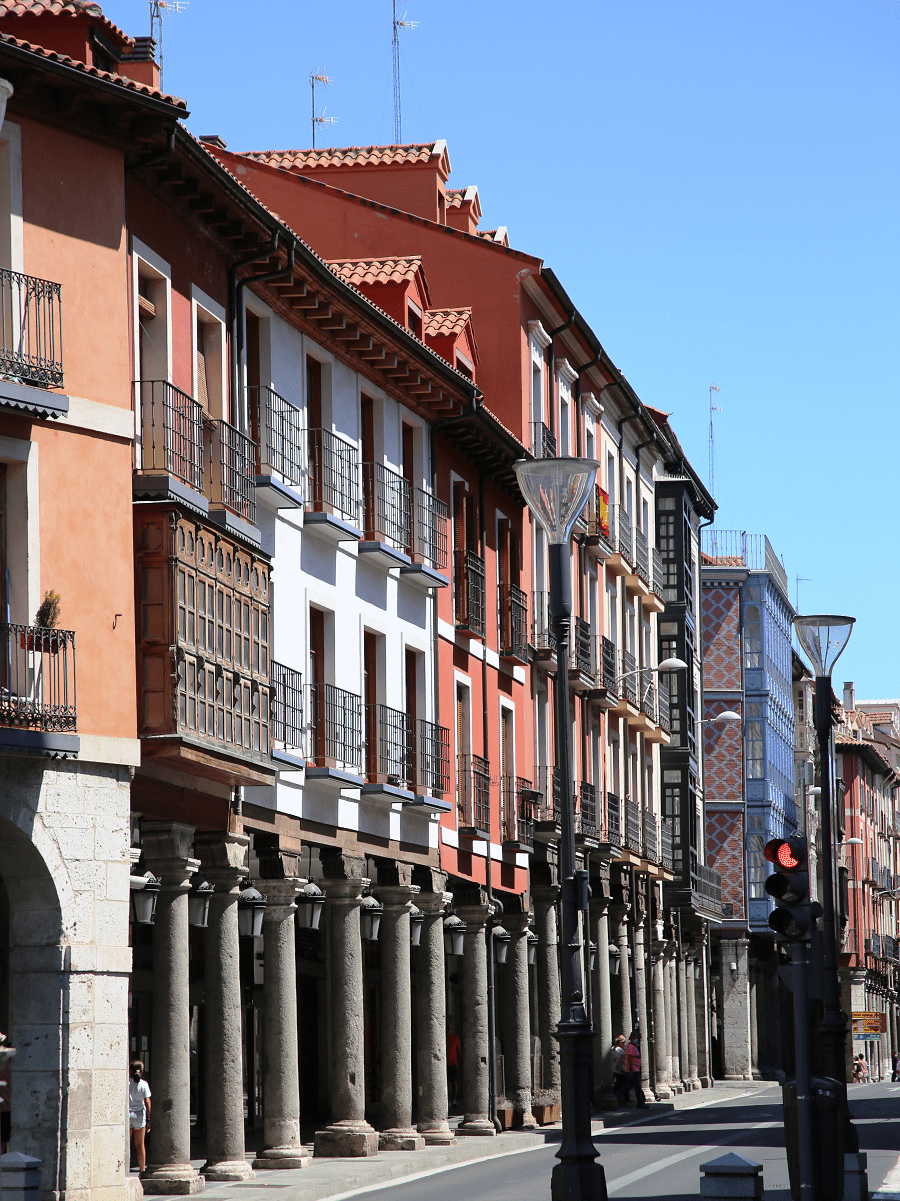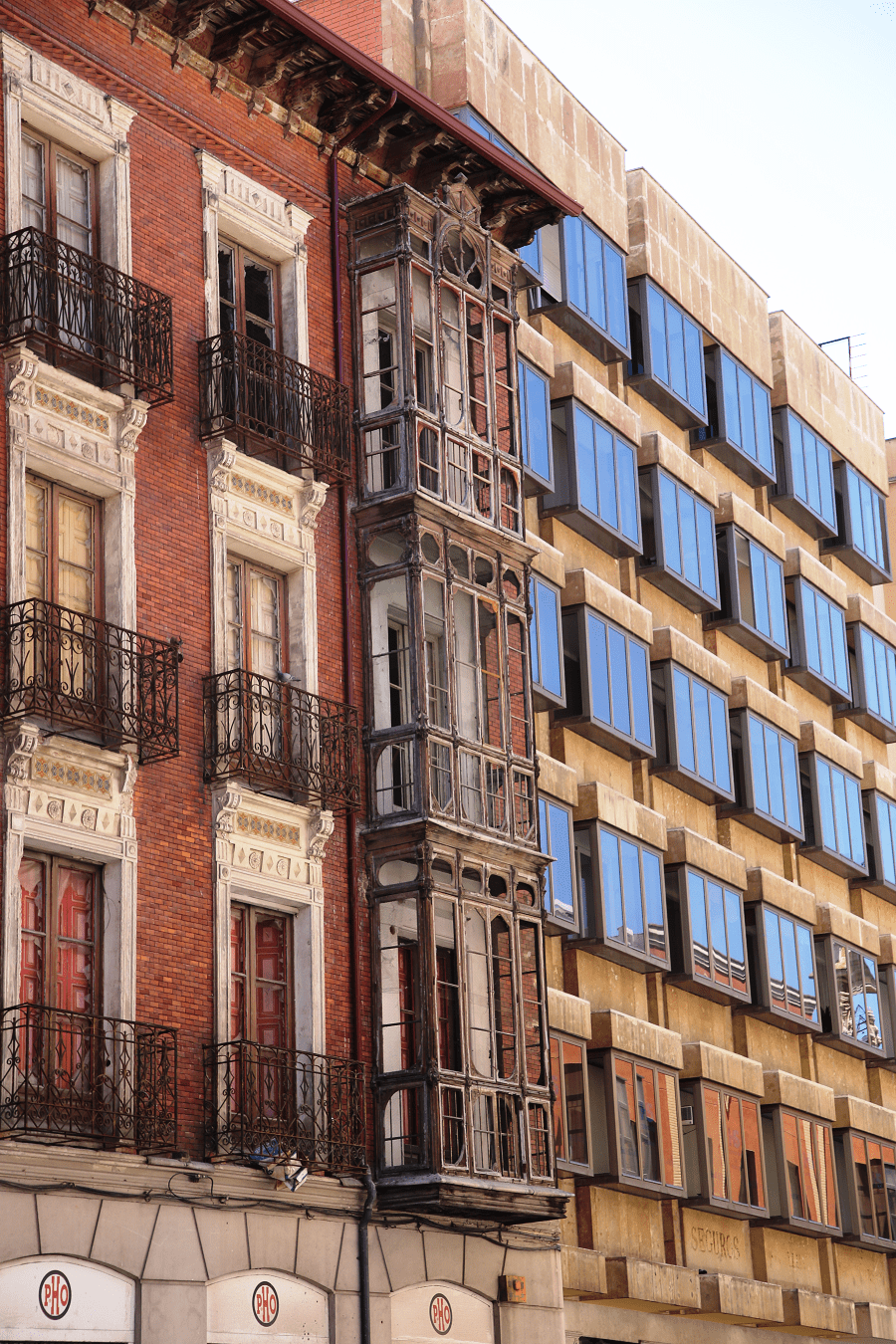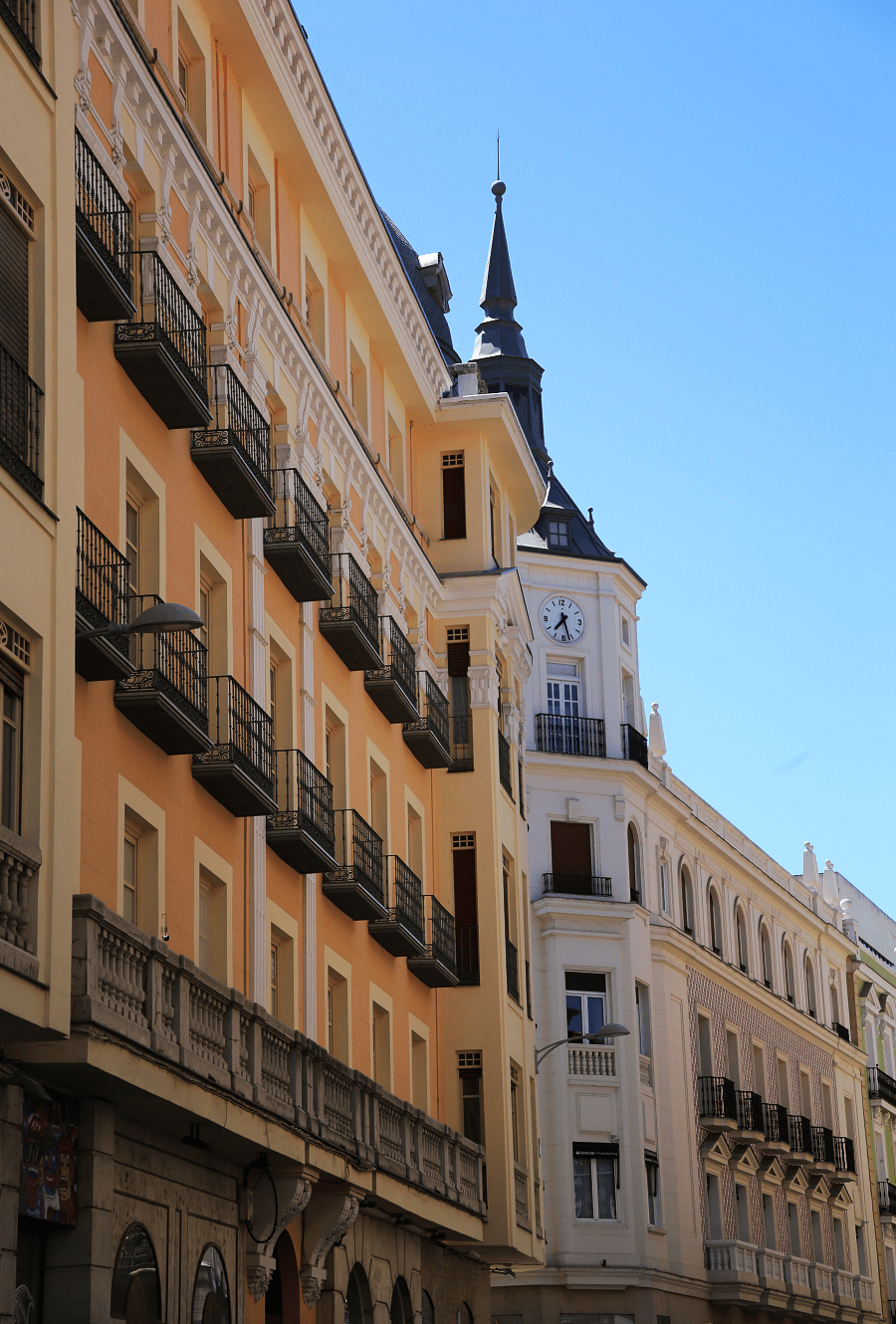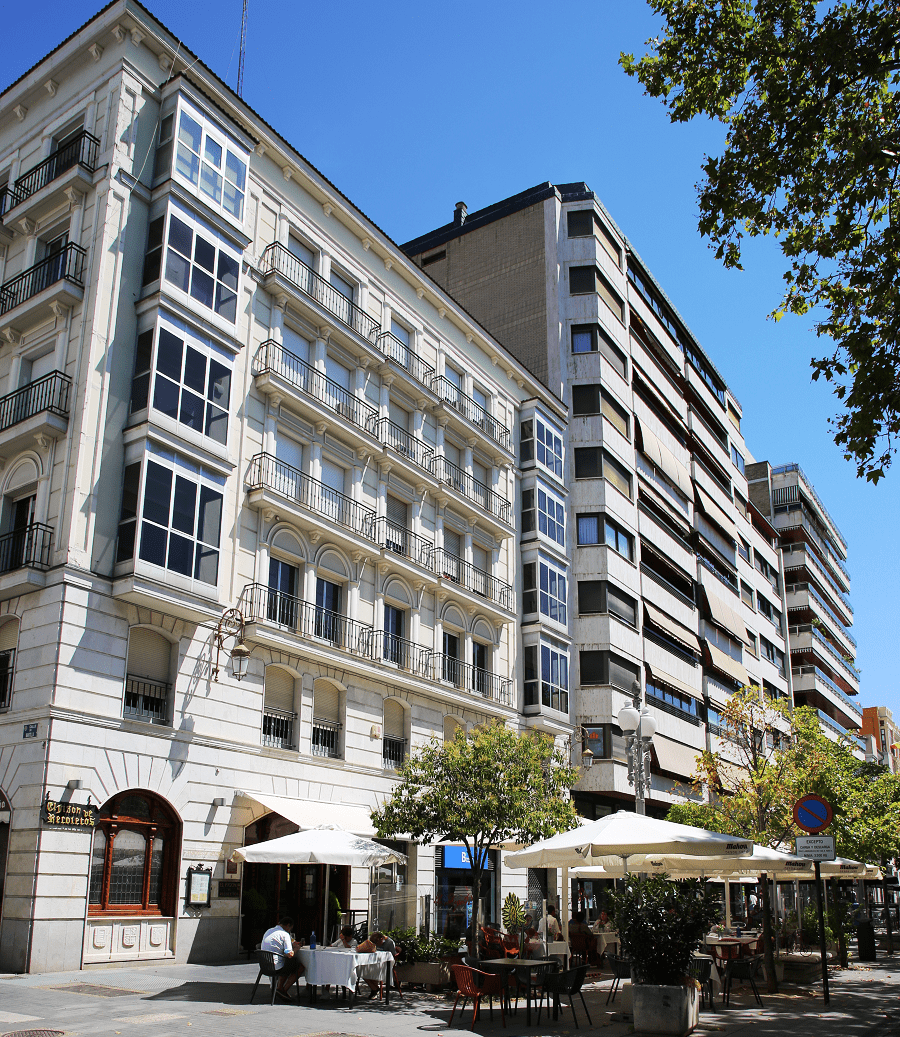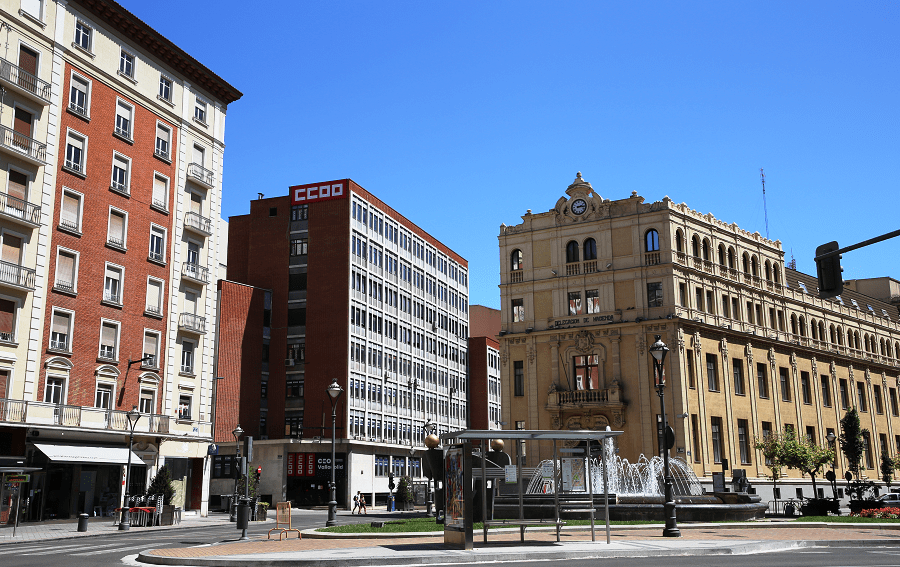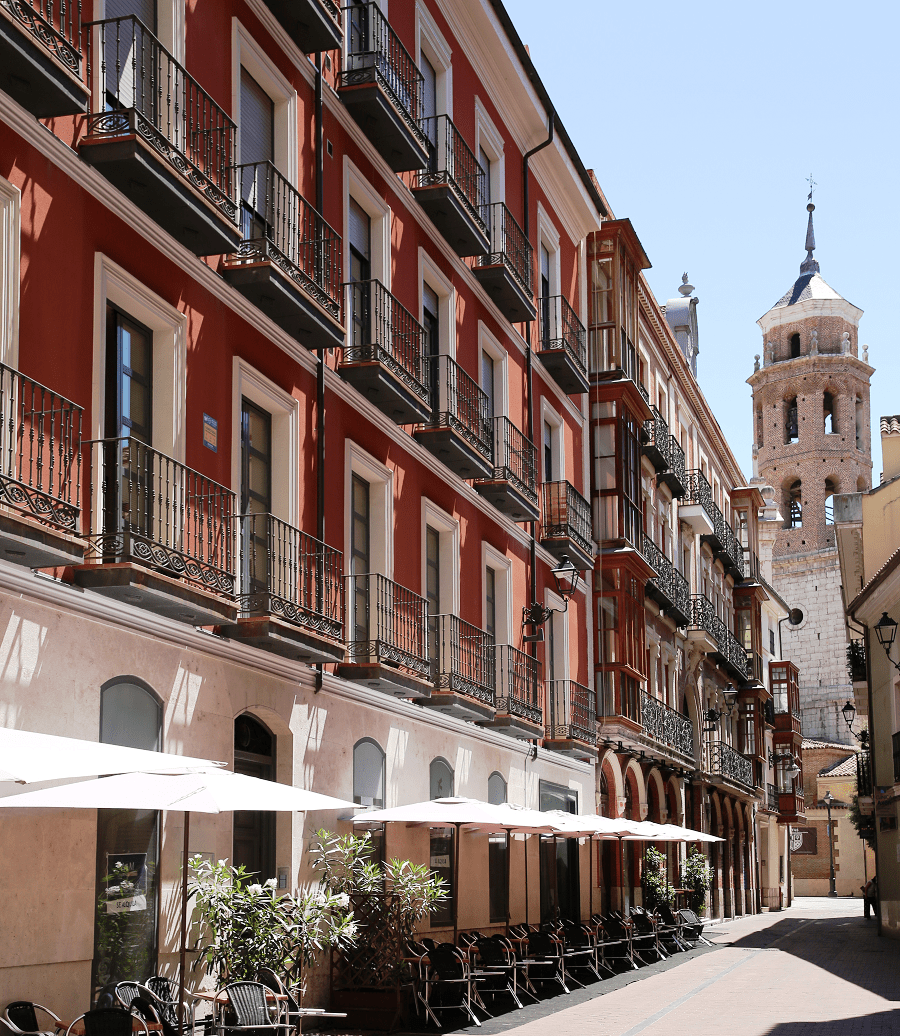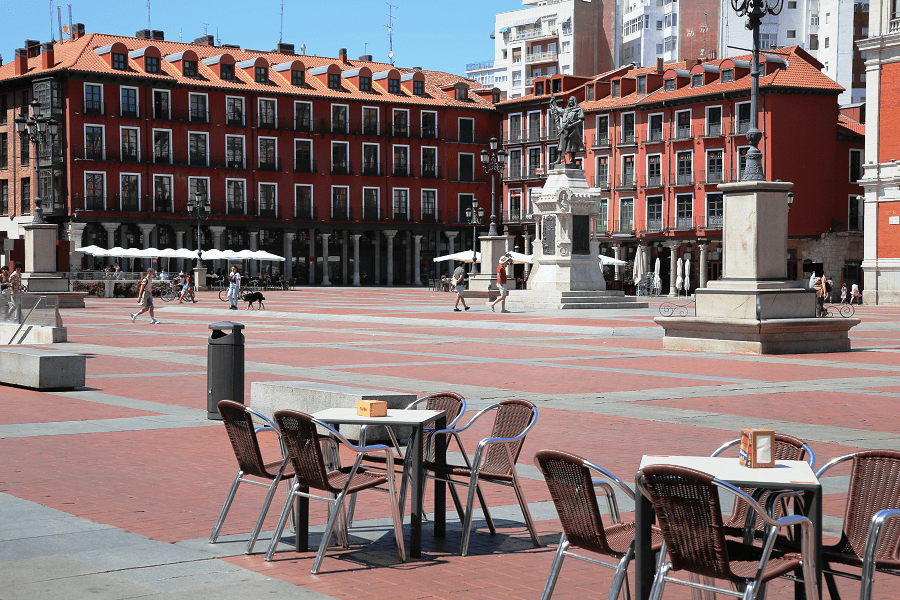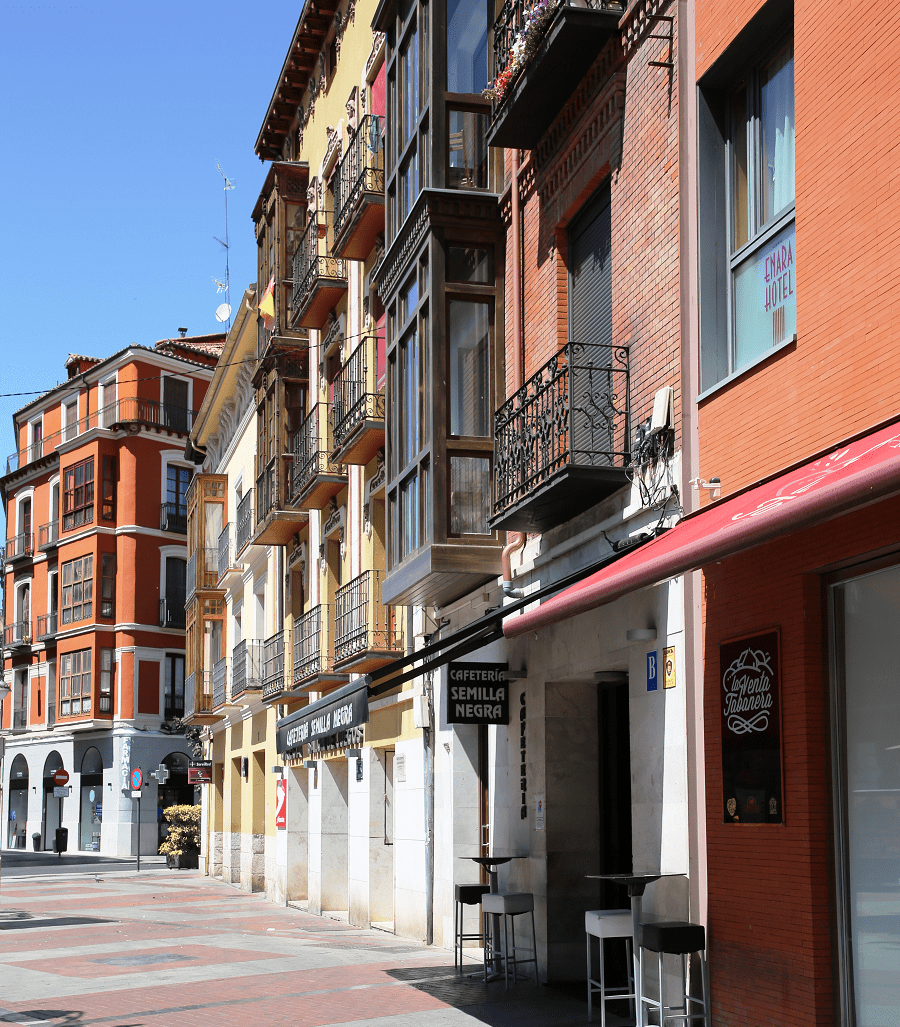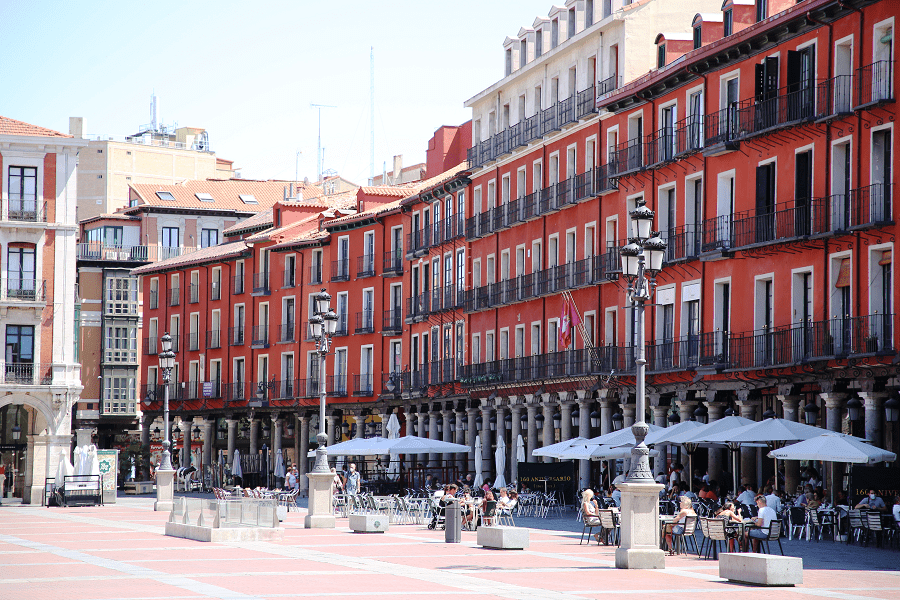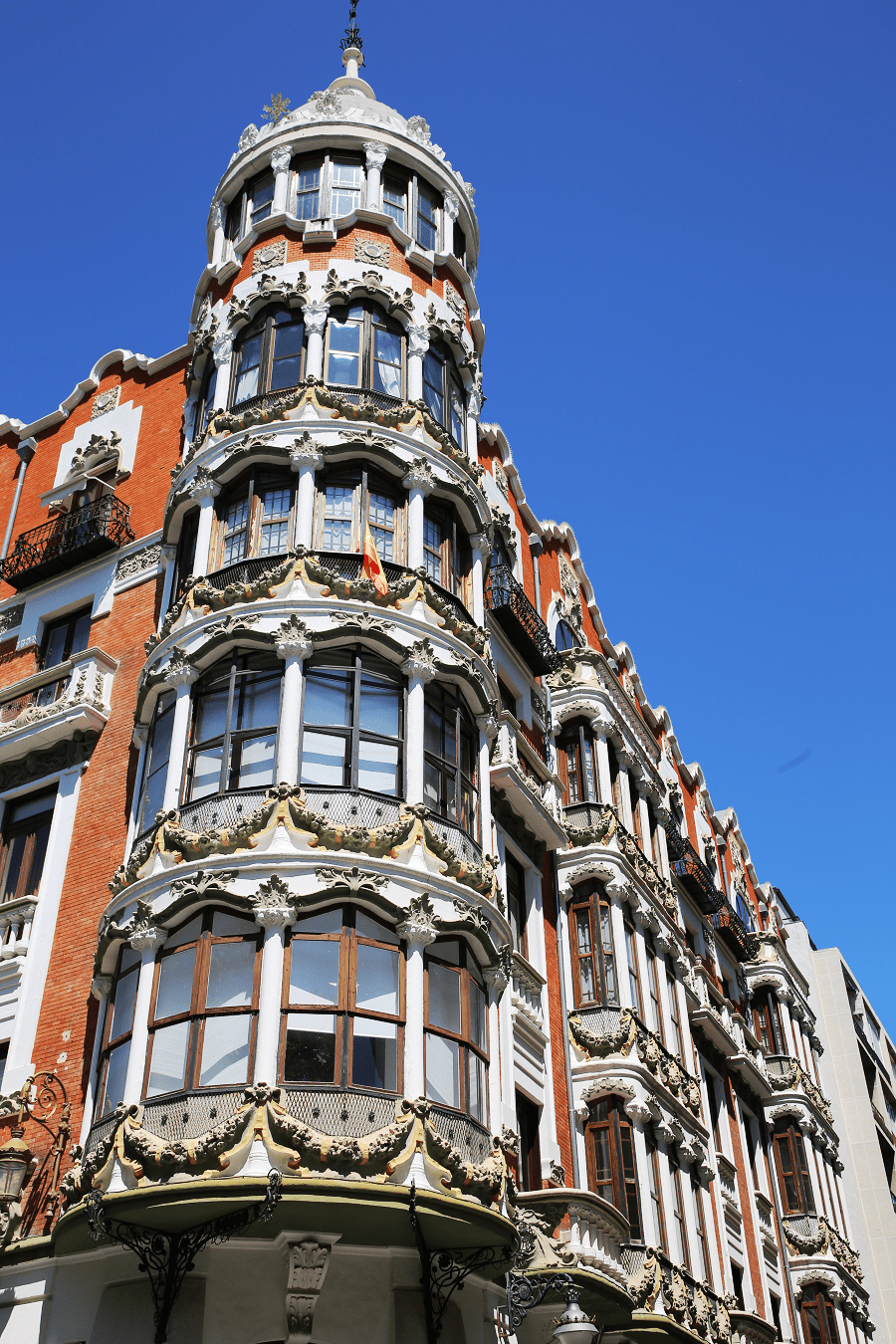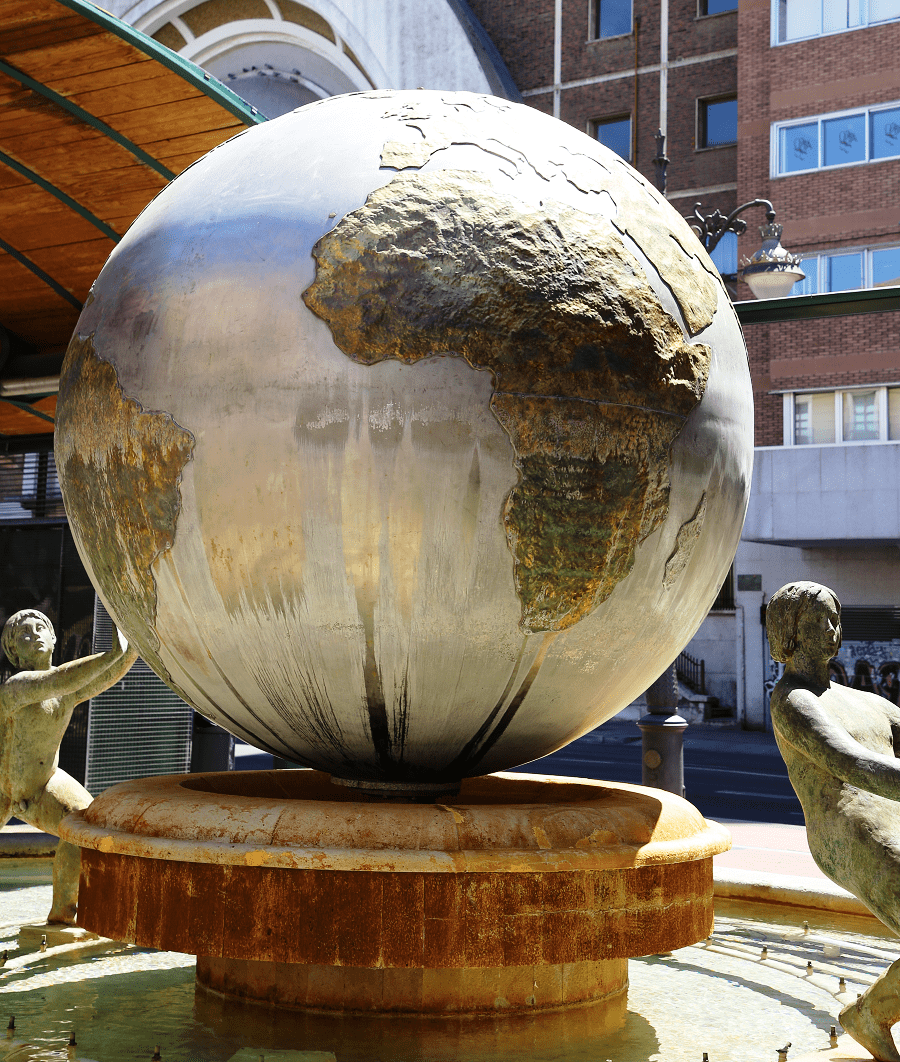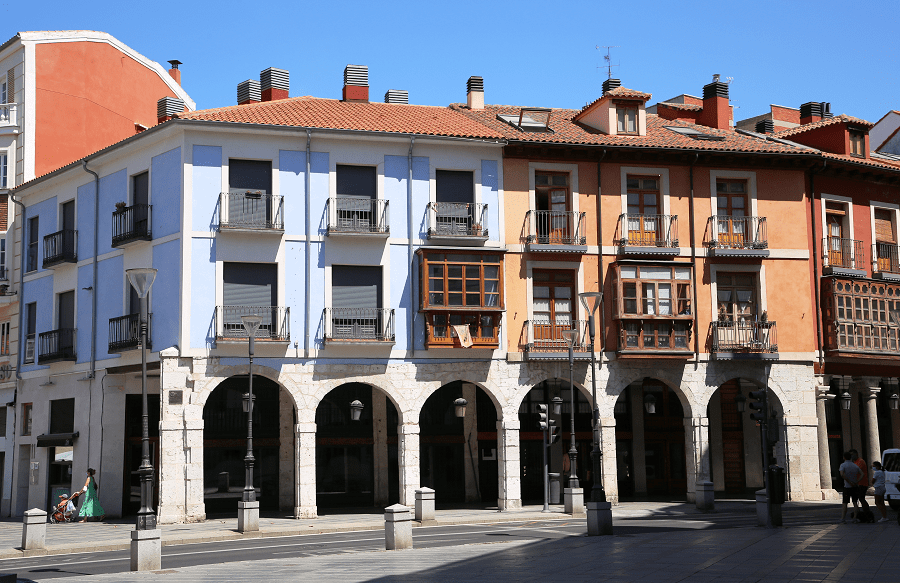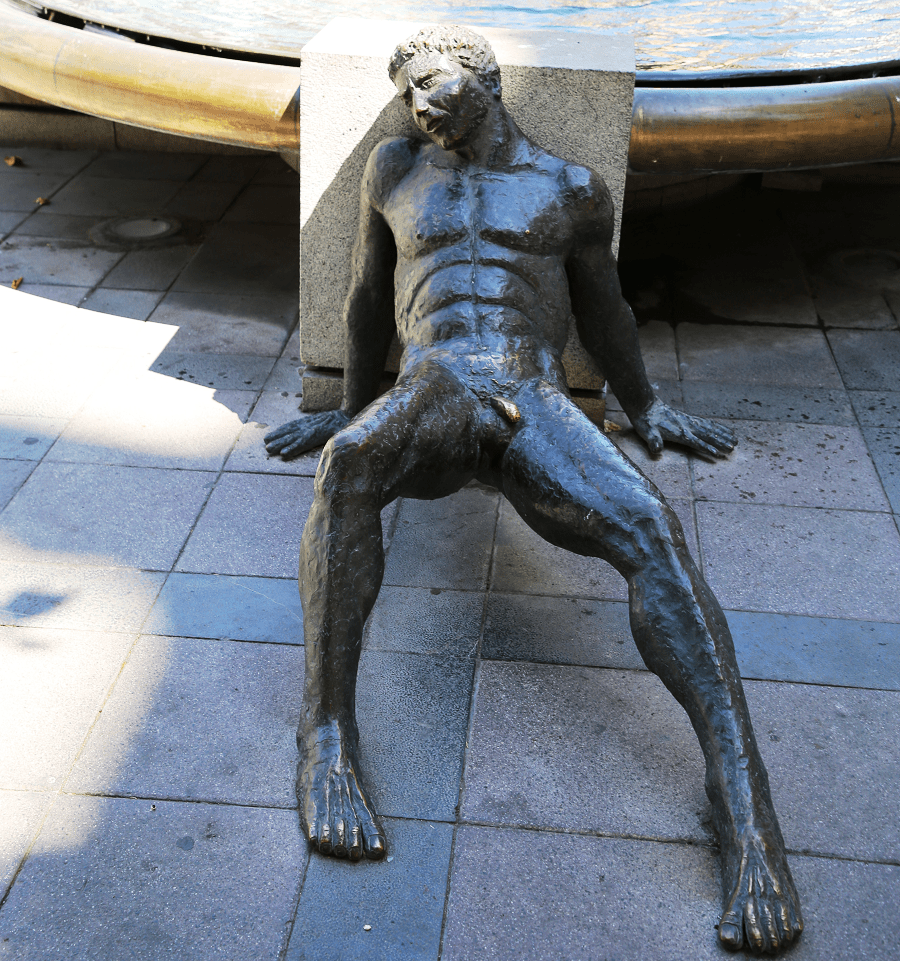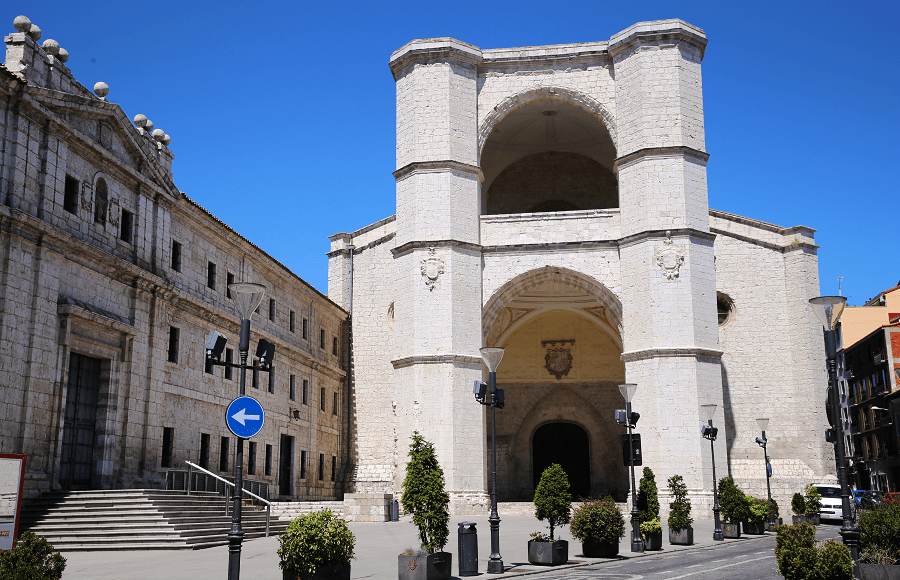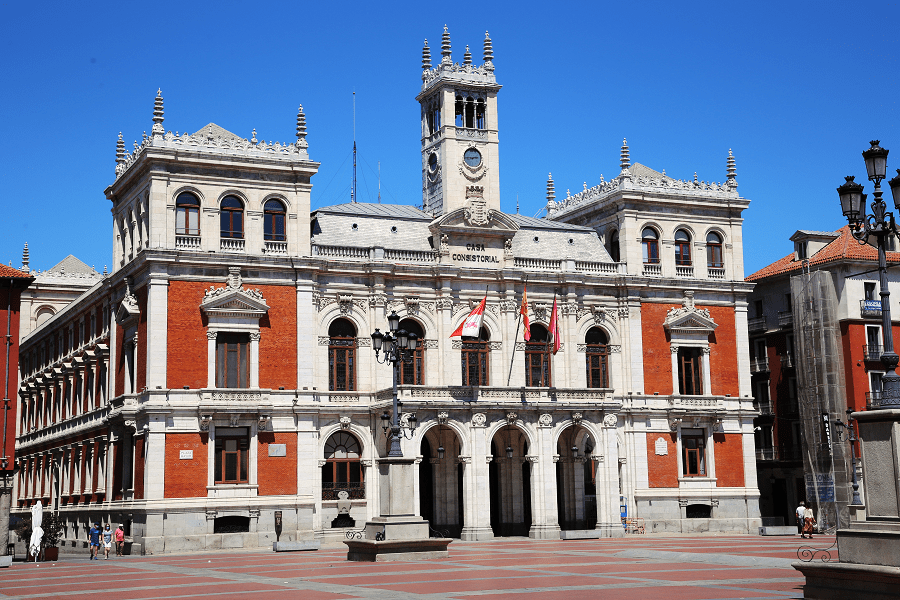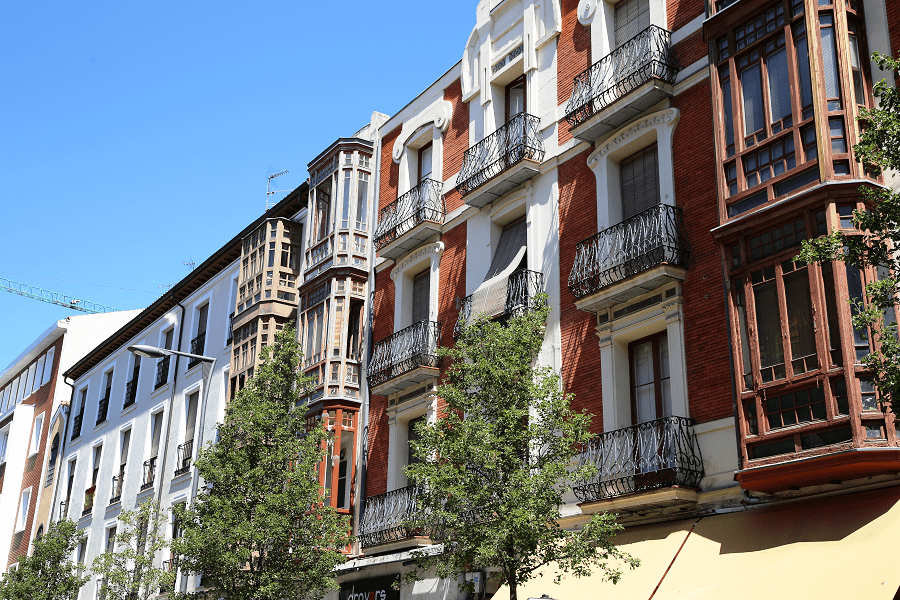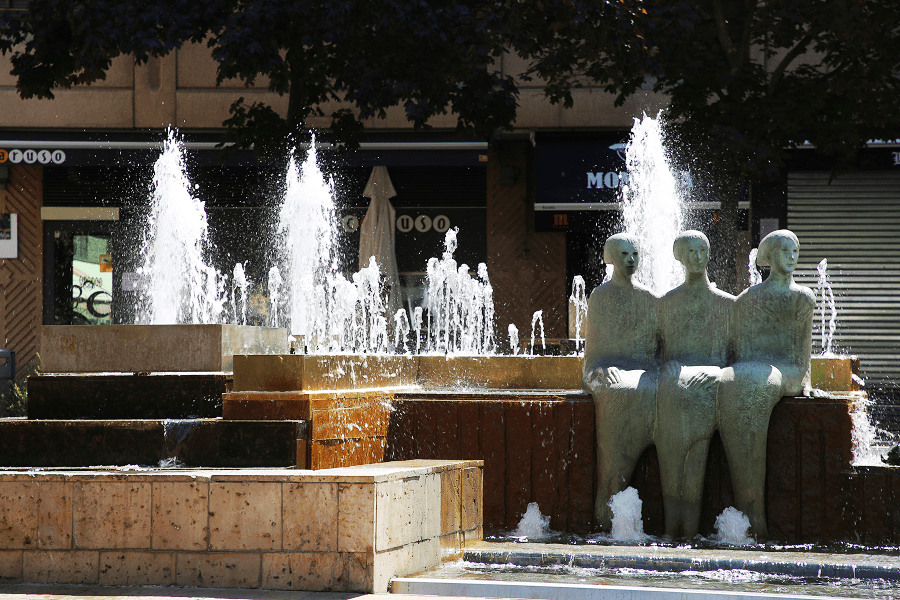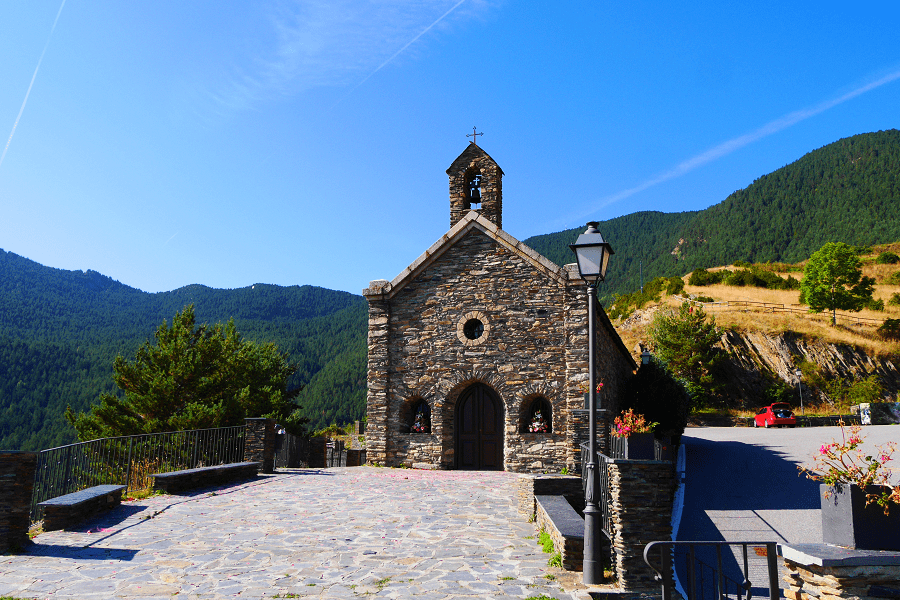Valladolid is a city in Spain and the capital of the autonomous community of Castile and León. It has a population of about 300,000 people, making it Spain’s 13th most populous municipality and northwestern Spain’s biggest city.
Valladolid is a major economic center in Spain.
Its strategic position and communication through a wide network of highways, high speed (AVE), conventional rail, airport, and its character as a logistics node in the European Atlantic Corridor, make its specialization as an industrial pole of Castile and León.
It preserves in its old town a historical complex made up of palaces, noble houses, churches, squares, avenues and parks, along with a museum heritage in which the National Sculpture Museum, the Patio Herreriano Museum of Contemporary Art or the Oriental Museum stand out. Among the events that are held each year in the city are its Holy Week, the Valladolid International Film Week (SEMINCI), the International Interior Tourism Fair (INTUR), the National Competition of Pinchos y Tapas “Ciudad de Valladolid “or the Festival of Theater and Street Arts (TAC).
Main attractions
Near the Pisuerga river, together with the one that for a long time was the only way to enter the city, the Mayor bridge, crossing the streets of the old Jewish quarter of the city, there are a series of squares and streets with an abundance of ancient temples and civil noble buildings. In this environment are located the Palace of the Counts of Benavente, the Church of San Nicolás de Bari or the Convent of San Quirce, in the Plaza de la Trinidad, the conventual street of Santo Domingo de Guzmán and the church of San Agustín, converted today in municipal archives.
In the Plaza de San Pablo there is the Church of San Pablo, which has a facade of Simón de Colonia, in Elizabethan Gothic style, which it resembles a stone altarpiece. It corresponds to the last period of the Gothic style. It was the scene of numerous royal ceremonies, the first burial of the infant Alfonso and Juan II, or the place of baptism of Enrique IV, Felipe II, Felipe IV and Ana de Austria. Here Maximilian II and Maria of Austria married, and Hadrian of Utrecht took the cardinal’s hat, which would eventually become Pope Adriano VI. It was the favorite place of many bishops who later carried out their pastoral activity in the New World.
On the opposite side of the square, the Royal Palace, residence of the Spanish monarchs Carlos I, Felipe II and Felipe III and also of Napoleon Bonaparte during the War of Independence, has reached the present with numerous structural alterations of its original plans, concluded around 1528. Philip IV was born here in 1605. It was built by Luis de Vega, architect of Carlos I and its Renaissance patio has decoration of medallions attributed to Esteban Jamete and coats of arms of the different territories belonging to the Spanish Empire. In the 18th century Ventura Rodríguez built the neoclassical staircase.
The corner with Calle de Las Angustias is occupied by the Pimentel palace, in which Philip II was born in 1527. The brick building has two notable stone details: the doorway with an arch and the corner with a Plateresque angular window.
Calle Cadenas de San Gregorio houses the four dependencies of the National Sculpture Museum: the Colegio de San Gregorio, the Church of San Benito el Viejo, the Villena Palace and the Palace of the Count of Gondomar (Casa del Sol).
Next to the Palacio de Villena, on Fray Luis de Granada street, is the house where the romantic poet José Zorrilla was born and lived, and which houses the Zorrilla House Museum. Nearby, the church of San Martín stands out for its slender tower, built in Romanesque style at the beginning of the 13th century. For its part, classicism prevails on the façade of the Penitential Church of Nuestra Señora de las Angustias, erected at the beginning of the 17th century, with a monumental sculpture by Francisco del Rincón.
Opposite this last temple, inaugurated in 1864 according to the project of Jerónimo de la Gándara, is the Calderón Theater. Its location and structure follow the currents of the moment. The façade moves within the classicist taste and inside is the show room, in the shape of a horseshoe, in the Italian style. It is decorated with paintings by Augusto Ferri, a set designer of the time.
Behind the theater is the Archbishop’s Palace, which was owned by Juan de Villasante and María de Villarroel, built in the mid-sixteenth century. In 1857 it became the seat of the first archbishop of Valladolid, Luis de la Lastra y Cuesta.
Urbanized in the 16th century, the Plaza Mayor of Valladolid is the first regular main square in Spain, and served as a model, from the 17th century, for many others in Spain and South America: in the 19th century, the old Plaza del Mercado became the cultural, political, economic and social center of the city.
In 1908 the current Town Hall opened its doors, a palace with four towers, a rectangular floor plan and an interior patio, from the front of which stands a tribune that supports the main balcony. This building is the work of Enrique María Repullés, inspired by Antonio de Iturralde’s project, but modifying it to imitate the models of Spanish Renaissance architecture.
Opposite the Town Hall, in the place that was occupied by the San Francisco convent until the 19th century, where Christopher Columbus died, is the Zorrilla Theater. The theater was inaugurated in October 1884.
On one of the sides of the Town Hall, the church of Jesús maintains a Catalan-style neo-Romanesque façade, in pressed brick.
Crossing the Plaza de la Rinconada, behind the City Hall building, where the Palacio de Correos y Telégrafos stands, you can access the church of San Benito el Real, of the Benedictine order, one of the oldest temples in Valladolid. It was erected on top of the old Alcázar Real, and is made in the Gothic style, although the façade is later: it was designed by Rodrigo Gil de Hontañón in the mid-16th century. Inside, the grating from the same century stands out, which encompasses the three naves of the church. Next to it is the Mercado del Val, which dates back to the 19th century.
Nearby, the church of San Miguel and San Julián, on the highest topographic point of the city, was the temple of the Society of Jesus in Valladolid, as evidenced by the facade and the interior structure, conforming to the Roman model. Inside you can see works by Gregorio Fernández and reliefs by Adrián Álvarez and Francisco de Rincón.
In the same street of San Ignacio some of the many palaces built in this area in the times of Felipe II are preserved, such as the Palace of the Marquis of Valverde, in whose exterior stands out an angled window and the decoration of medallions, and the Palace by Fabio Nelli, a work of Renaissance classicism by Juan de Lastra and Diego de Praves. Next to these palaces, through a small entrance, you enter the Plaza del Viejo Coso, the original bullring of Valladolid.
In the Plaza de las Brígidas you will find the Convent of Las Brígidas, the former Palace house of Licenciado Butrón, now converted into the General Archive of Castilla y León. The attached church has a brick façade.
The Penitential Church of Nuestra Señora de la Vera Cruz, at the end of Calle de la Platería, was designed by Diego de Praves in 1596. It houses processional sculptures in polychrome wood, belonging to the Cofradía de la Vera-Cruz.
The unfinished Cathedral of Valladolid, initially projected by Juan de Herrera in the 16th century (intending to follow a Mannerist style) experienced protracted building works owing to financial problems and its main body was not opened until 1668. Decades later, in 1730, Alberto de Churriguera finished the work on the main front.
Bordering the Campo Grande, on the Acera de Recoletos, a great artery of expansion of the bourgeoisie, there are buildings from the late nineteenth and early twentieth centuries: the Casa Mantilla, from 1891, in an eclectic style, with Renaissance inspiration, or the modernist Casa del Príncipe, from 1906, the work of Jerónimo Arroyo, an architect from Palencia trained at the Barcelona school.
Museums
The National Sculpture Museum has international relevance, as it has the most important sculpture collection in the Peninsula and is one of the most outstanding in Europe in its field. It dates back to 1842 as the Provincial Museum of Fine Arts, but was elevated to the category of National in 1933.
Inside the Cathedral of Our Lady of the Assumption is the Diocesan and Cathedral Museum, inaugurated in 1965 on the initiative of the then Archbishop of Valladolid, José García Goldáraz. Its funds are distributed throughout ten chapels that grouped dependencies of the old medieval collegiate church of Santa María erected by Count Ansúrez, such as Chapter House, Cloister Chapel, Cathedral Chapter.
In the Museum of Valladolid (Fabio Nelli Palace), which is part of the so-called “Provincial Museums”, sections of Archeology are exhibited that show a complete chronological sequence of pieces from the Valladolid province from the Paleolithic to the Middle Ages (such as the Roman mosaics found in Villa del Prado).
The Patio Herreriano Museum of Spanish Contemporary Art, an important reference in the dissemination of contemporary art, since its foundation, and inaugurated in June 2002.
Anatomical Museum. Founded in 1917 by Salvino Sierra in the anatomical pavilion of the Faculty of Medicine. In it you can admire pieces of natural and artificial human anatomy, skeletons of animal skulls, as well as instruments and devices related to medicine.
Museum of Natural Sciences. It has 5102 pieces, conformed with essentially scientific and pedagogical criteria. There are collections of Natural Sciences, Botany, Zoology and Geology.
Doctor Saracíbar Ophthalmology Museum. It is a museum attached to the University Institute of Applied Ophthalmology (IOBA) of the University of Valladolid. It is named after José María Saracíbar, an ophthalmologist from Valladolid who donated a good part of the material that can be seen today. In the museum, created in 1995, you will find instruments, devices, books and treatises on ophthalmology from the late nineteenth and early twentieth centuries.
Science Museum: built on the facilities of the old flour factory El Palero (only the façade remains). The museum consists of a permanent exhibition, through the rooms different aspects of science are presented, starting with its digital planetarium, one of the most modern in the world, which allows all kinds of exhibitions.
The Colon House Museum. After the demolition in the 1920s of the building in which Admiral Christopher Columbus died, on the street of the same name, in 1968 the current building was inaugurated, a replica of the Columbus palace in Puerto Rico. It has been remodeled and reopened with multimedia and interactive content in 2006, on the occasion of the V Centenary of the death of the sailor in Valladolid.
Gastronomy and the best restaurants
Although an inland province, fish is commonly consumed, some brought from the Cantabrian Sea. Fish like red bream and hake are a major part of Valladolid’s cuisine.
The main speciality of Valladolid is, however, lechazo (suckling baby lamb). The lechazo is slowly roasted in a wood oven and served with salad.
Valladolid also offers a great assortment of wild mushrooms. Asparagus, endive and beans can also be found. Some legumes, like white beans and lentils are particularly good. Pine nuts are also produced in great quantities.
Sheep cheese from Villalón de Campos, the famous pata de mulo (mule’s foot) is usually unripened (fresh), but if it is cured the ripening process brings out such flavour that it can compete with the best sheep cheeses in Spain.
Valladolid has a bread to go with every dish, like the delicious cuadros from Medina del Campo, the muffins, the pork-scratching bread and the lechuguinos, with a pattern of concentric circles that resemble a head of lettuce.
The pastries and baked goods from the province of Valladolid are well-known, specially St. Mary’s ring-shaped pastries, St. Claire’s sponge cakes, pine nut balls and cream fritters.
Valladolid is also a producer of wines. The ones that fall under the Designation of Origin Cigales are very good. White wines from Rueda and red wines from Ribera del Duero are known for their quality.
There are 11 Michelin list restaurants in the city:
- Trigo, Tintes 8, 55 EUR • Modern Cuisine (one star)
- Alquimia, Antigua 6, 28 – 80 EUR • Modern Cuisine, Fusion
- 5 Gustos, Torrecilla 8, 40 – 60 EUR • Market Cuisine
- Jamonería Sarmiento-Jabuguito, Conde Ansúrez 11, 30 – 50 EUR • Traditional Cuisine
- Paco Espinosa, Paseo Obregón 16, 45 – 75 EUR • Seafood
- Trasto, Menéndez Pelayo, 40 – 65 EUR • Modern Cuisine
- Jero, Correos 11, 40 – 60 EUR • Traditional Cuisine
- Villa Paramesa, Plaza Martí y Monsó 4, 31 – 50 EUR • Contemporary Cuisine
- Dámaso, Corbeta 1, 45 – 60 EUR • Modern Cuisine
- La Cocina de Manuel, Hípica 1, 30 – 45 EUR • Traditional Cuisine, Modern Cuisine
- Llantén, Encina 11, 34 – 50 EUR • Traditional Cuisine
Festivals
Holy Week (“Semana Santa” in Spanish) holds one of the best known Catholic traditions in Valladolid. The Good Friday processions are considered an exquisite and rich display of Castilian religious sculpture. On this day, in the morning, members of the brotherhoods on horseback make a poetic proclamation throughout the city.
The city is also host to one of the foremost (and oldest) international film festivals, the Semana Internacional de Cine de Valladolid (Seminci), founded in 1956. Valladolid, through various loopholes in state censorship, was able to present films that would otherwise have been impossible to see in Spain.
Transport and how to get to?
Nearest airport serving the city is not located within the municipal limits, but in Villanubla. The airport has connections to Barcelona, Málaga, and the Canary Islands.
Valladolid-Campo Grande railway station is integrated into the Spanish high-speed network AVE.
Distances by car to the main cities of Castile and León:
From Avila 1 hr 30 min (119 km) via N-403 and N-601
From Burgos 1 hr 25 min (134 km) via A-62
From Leon 1 hr 45 min (141 km) via N-601
From Palencia 44 min (57.5 km) via A-62
From Salamanca 1 hr 17 min (121 km) via A-62
From Segovia 1 hr 17 min (115 km) via A-601
From Soria 2 hr 35 min (208 km) via N-122 and A-11
From Zamora 1 hr 10 min (102 km) via A-11 and A-62
From the capital Madrid 2 hr 18 min (190 km) via AP-6 and N-601
Main information
Area: 197 sq. km
GPS coordinates: 41°39′07″N 4°43′43″W
Language: Spanish
Population: 299 265
Currency: Euro
Visa: Schengen
Time: Central European UTC +1, in summer +2




